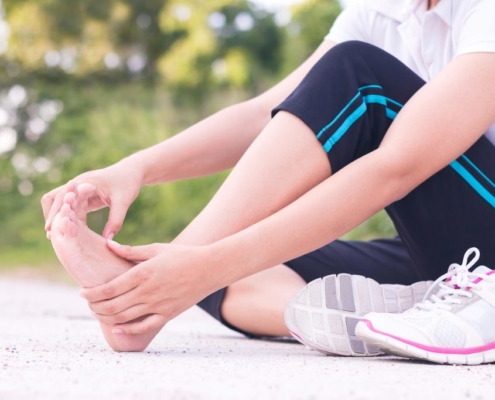Proper Footwear
Proper foot wear can make a tremendous difference in the proper functioning of your feet. Fashion often dictates the types of shoes that people buy – but this can be harmful to the health of your feet. The following are some general guidelines when shopping for new shoes:
BUYING TIPS
- Have your feet measured while you’re standing
- Always try on both shoes, and walk around the store
- Always buy for the larger foot; feet are seldom precisely the same size
- Don’t buy shoes that need a “break-in” period; shoes should be comfortable immediately
- Don’t rely on the size of your last pair of shoes. Your feet do get larger, and lasts (shoemakers’ sizing molds) also vary
- Shop for shoes later in the day; feet tend to swell during the day, and it’s best to be fitted while they are in that state
- Be sure that shoes fit well—front, back, and sides—to distribute weight. It sounds elementary, but be sure the widest part of your foot corresponds to the widest part of the shoe
- Select a shoe with a leather upper, stiff heel counter, appropriate cushioning, and flexibility at the ball of the foot. The shoe should not bend in the arch area
- Buy shoes that don’t pinch your toes, either at the tips, or across the toe box
- Try on shoes while you’re wearing the same type of socks or stockings you expect to wear with the shoes
- If you wear prescription orthotics-biomechanical inserts prescribed by a podiatric physician-you should take them along to shoe fittings.
SHOES FOR ATHLETICS
Different sports activities call for specific footwear to protect feet and ankles. Sports—specific athletic shoes are a wise investment for serious athletes, though perhaps a less critical consideration for the weekend or occasional athlete; nevertheless, it’s a good idea to use the correct shoe for each sport. Probably a more important consideration is the condition of the shoe—don’t wear any sport or other shoes beyond their useful life.


